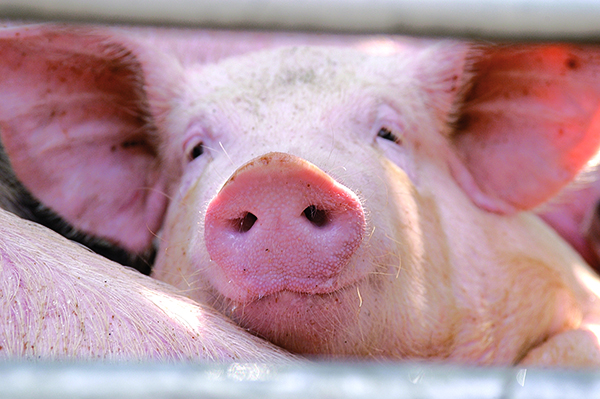[wpb_menu_accordion menu=”landbrug-menu”]

Friedrich Joas
Friedrich and Markus Joas GbR
97877 Wertheim
In our 60 kW biogas plant with cattle slurry/manure and grass, we have been using Active NS in the dosage with 20 g / m³ biomass for several years. The experiences so far have been positive. I have a good feeling about nitrogen dynamics and we will continue to use Active NS.

Ton van den Heuvel in Remda-Teichel, Thüringen. 1.650 sows, 33 weaned piglet/sow/year. Fatteners in Hroznětín, Czech Republic, (Carlsbad region in Egerland).
Slurry-Additive against flies
Since 2016, Ton van den Heuvel and his Czech plant manager Petr Dolejš, have been using Active NS as a slurry additive, and are very satisfied. Before, a floating layer tended to form on the slurry in the channels; and the flies were ‘a major catastrophe’, to quote Ton van den Heuvel.
‘I spent tens of thousands of Euros on fly remedies and insect growth regulators; we even tried out slurry flies’, he remembers, ‘without ever really being able to control the fly problem.’
Until a feed consultant told him about a product from Denmark - Active NS.
In Ton van den Heuvel’s fattening barns, improved homogeneity and flowability was the primary expected and resulting effect; the product dissolves the solid floating layers in the slurry channels, eliminating the habitat of most of the fly larvae.
Since then, Active NS is used every two months with 20 g / m³ manure, 10 kg are sufficient for 500 m³ manure. Ton van den Heuvel and Petr Dolejš have equipped a 1,000-liter plastic tank with a pump and a dosing tube for application.
’The problem with the flies is solved now and we humans as well as the animals are happy with the improved air quality in the barn’, Ton van den Heuvel explains. ‘Stirring is easier, too’, his employee Dolejš adds, ‘in the past, we had to add water to dissolve this floating layer, which was 25 centimeters thick. Today we are saving a lot of energy.’ Thus, Ton van den Heuvel also made this challenge.

Ben and Gabriela Leisink, Unterkoskau in Thüringen (Saale-Orla district). 1.200 sows.
Liquid feeding with byproducts
The feeding systems at Leisinks is nearly 100 %, based on liquid feeding, only in the boar and gilts rearing dry food is feed as pellets on feeders. In the liquid feeding, Ben Leisink is using lots of byproducts such as wheat bran, spent grains, brewer's yeast, whey and wheat from ethanol production.
Due to the fiber-rich by-products, many floating substances are in the manure, which led to a thick layer of floating in the 80 cm deep slurry channels. "That requires frequent stirring and that costs energy, time and work." Says Ben Leisink, who used Active NS for the first time in 2015 and had none of these problems since then.
Simple application, fast effect
"We realized soon in the stable, that there are less flies", said Ben Leisink. Less flies, means more rest in the stable. The animals can eat undisturbed, dealing, and sleep. This is ultimately reflected in the results, which speaks for itself, with over 30 weaned piglets per sow per year, in a purebred heard, is quite impressive. Reason enough for Ben and Gabriela Leisink, to employ Active NS in the future.

